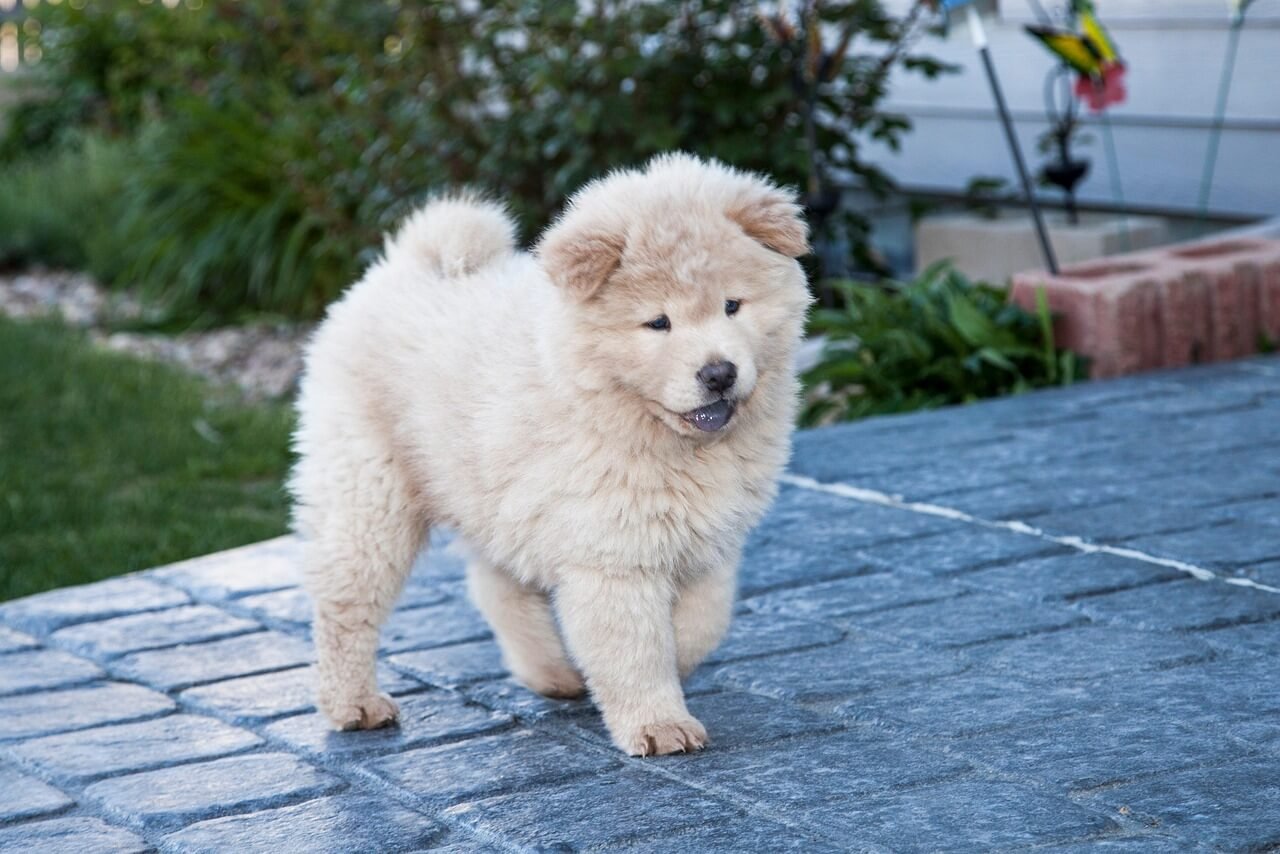Understanding the Meaning Behind Your Dog’s Stretching Behavior
Dogs are fascinating creatures, and their body language often speaks volumes about how they feel or what they want to communicate. One of the most common yet intriguing behaviors you might notice is when your dog stretches in front of you. Is it a sign of affection? A way to show respect? Or simply a random stretch to loosen up their muscles? In this blog post, we’ll dive deep into the meaning behind this adorable behavior and explore what your furry friend might be trying to tell you. Whether you’re a seasoned dog owner or new to the world of canine companionship, understanding these subtle cues can strengthen the bond between you and your pet.
Why Do Dogs Stretch? A Breakdown of Possible Reasons
Dogs stretch for various reasons, and each one can reveal something unique about their emotional state or physical needs. Here’s a quick overview of the most common explanations:
Physical Comfort :
Stretching helps dogs relieve tension in their muscles, especially after waking up or lying down for an extended period.Affection and Trust :
When a dog stretches in front of you, it could be a sign that they feel safe and comfortable around you.Playful Invitation :
Sometimes, stretching is a precursor to playtime, signaling that your dog is ready for some fun and interaction.Submission or Respect :
In certain contexts, stretching can indicate submission or deference, particularly if paired with other submissive behaviors like lowering their head.Relaxation Signal :
Stretching can also signify that your dog is feeling calm and relaxed in your presence.
Understanding these nuances can help you decode your dog’s actions more effectively. By observing their body language and context, you’ll gain deeper insights into their needs and emotions.
What Does It Mean When a Dog Stretches in Front of You? Insights to Consider
When your dog stretches in front of you, it’s not just a random act—it’s a form of communication. Let’s explore what this behavior might mean:
They Feel Safe Around You :
Dogs tend to stretch in environments where they feel secure and loved. If your dog does this near you, it means they trust you completely.They Want Attention or Playtime :
A stretch followed by a wagging tail or excited movements could mean your dog wants to engage with you.It’s a Sign of Submission :
Stretching can sometimes accompany submissive gestures, indicating that your dog acknowledges you as the leader.They’re Preparing for Physical Activity :
Similar to humans, dogs stretch to prepare their bodies for movement, whether it’s running, playing, or simply getting up from rest.They’re Expressing Contentment :
If your dog stretches leisurely in front of you, it may be their way of showing that they’re happy and at ease.
Every dog is different, so paying attention to the specific circumstances will help you interpret their stretching behavior accurately. Ultimately, this simple act underscores the strong connection between you and your four-legged companion.
Check this guide 👉Why Wont My Dog Eat Kibble But Devours Everything Else? Best 7 Tips
Check this guide 👉Why Does My Dog Rest His Head on Me When He Sleeps? Best 7 Tips
Check this guide 👉Why Does My Dog Sound Congested? Best 7 Health Tips!

Possible Interpretations | Physical/Emotional Indicators |
|---|---|
Showing Affection | Relaxed posture, wagging tail |
Seeking Playtime | Excited energy, playful barks |
Demonstrating Submission | Lowered head, avoiding eye contact |
Preparing for Movement | Followed by walking or running |
Feeling Comfortable | Slow, deliberate stretch |
How to Respond When Your Dog Stretches in Front of You
Reacting appropriately to your dog’s stretching behavior can enhance your relationship and ensure mutual understanding. Here’s how you can respond:
Acknowledge Their Presence :
Simply acknowledging your dog with a smile or gentle pat reassures them that you’ve noticed their gesture.Engage in Playtime :
If the stretch seems playful, grab a toy or take them outside for some exercise.Provide Positive Reinforcement :
Rewarding good behavior with treats or praise strengthens the bond between you and your pet.Observe Their Body Language :
Look for additional cues like tail wags or ear positions to better understand their intentions.Ensure They’re Comfortable :
Make sure your dog has a cozy space to relax, especially if the stretch indicates they’re settling down.
By responding thoughtfully, you create a nurturing environment that fosters trust and happiness for both you and your dog.
Common Misinterpretations of Dog Stretching Behavior
While stretching is generally positive, there are a few misconceptions worth addressing. Below are some common misunderstandings:
Stretching Always Indicates Playfulness :
Not every stretch is an invitation to play; sometimes, it’s purely physical.It’s Only Done After Sleep :
While stretching after naps is common, dogs stretch throughout the day for various reasons.It Means They’re Hungry :
Unlike pacing or whining, stretching isn’t typically associated with hunger.All Dogs Stretch the Same Way :
Different breeds have unique styles of stretching based on their size and flexibility.It’s Solely a Physical Act :
Many stretches carry emotional significance, such as trust or submission.
Clarifying these myths ensures you don’t misread your dog’s signals, allowing for clearer communication and a stronger bond.
Physical Benefits of Stretching for Dogs
Stretching isn’t just a behavioral cue—it also has numerous physical benefits for your dog. Whether they’re preparing for activity or simply maintaining their flexibility, stretching plays an essential role in their overall health. Here are some key advantages:
Improves Muscle Flexibility :
Regular stretching helps dogs maintain limber muscles, reducing the risk of strains or injuries.Enhances Blood Circulation :
Stretching promotes better blood flow, which supports muscle recovery and overall vitality.Reduces Joint Stiffness :
For older dogs or those with arthritis, stretching can alleviate discomfort and improve mobility.Prepares for Physical Activity :
Just like humans, dogs stretch to warm up their bodies before engaging in exercise or play.Supports Spinal Health :
Certain stretches, like the “play bow,” help align the spine and relieve tension in the back.
By encouraging healthy stretching habits, you contribute to your dog’s long-term physical well-being. It’s a small but impactful way to ensure they stay active and pain-free.
Emotional Signals Through Stretching
While stretching has physical benefits, it also serves as a powerful emotional signal. Dogs use this behavior to communicate their feelings, whether it’s happiness, trust, or even anxiety. Here’s how stretching can reflect their emotional state:
Expresses Contentment :
A relaxed stretch often indicates that your dog feels safe and at ease in their environment.Signals Trust and Bonding :
Stretching in front of you is a sign that your dog sees you as a source of comfort and security.Indicates Excitement or Anticipation :
If paired with wagging tails or eager movements, stretching may show they’re looking forward to something fun.Reflects Submission or Respect :
In certain situations, stretching can convey deference, especially during interactions with other dogs or humans.Helps Relieve Stress :
Some dogs stretch as a self-soothing mechanism to calm themselves in stressful situations.
Understanding these emotional signals allows you to respond appropriately and nurture a deeper connection with your furry friend. Every stretch tells a story—listen closely, and you’ll uncover its meaning.
Fun Facts About Dog Stretching
Dog stretching isn’t just practical—it’s also full of fascinating quirks that make our canine companions even more endearing. Here are some fun facts about why and how dogs stretch:
The “Play Bow” Stretch :
This iconic stretch, where dogs lower their front legs while keeping their hindquarters up, is a universal invitation to play.Stretching After Naps :
Known as the “yoga pose” or “downward dog,” this stretch is common after waking up and helps realign the body.Breed-Specific Stretching Styles :
Larger breeds like Great Danes may stretch differently than smaller breeds like Dachshunds due to their unique body structures.Mimicking Human Behavior :
Some dogs stretch because they’ve observed their owners doing yoga or similar activities, showing their ability to imitate human actions.Stretching as a Social Gesture :
Dogs often stretch when greeting other dogs or humans, using it as a friendly and non-threatening gesture.
These delightful details highlight the charm and complexity of dog behavior. Next time your pup strikes a stretch, take a moment to marvel at the wonder of their instincts and adaptability.
Frequently Asked Questions About Dog Stretching Behavior
Why does my dog stretch so much?
Dogs stretch to relieve muscle tension, express comfort, or prepare for activity.
Is stretching a sign of dominance?
No, stretching is usually a neutral or submissive behavior rather than dominant.
Should I worry if my dog stretches too often?
Occasional stretching is normal, but excessive stretching combined with discomfort could indicate health issues.
Can stretching be a sign of pain?
Yes, if accompanied by limping or reluctance to move, consult a vet.
Do all dogs stretch in front of their owners?
Not all dogs exhibit this behavior, but those who do likely feel a strong connection to their humans.
Final Thoughts: Decoding Your Dog’s Stretching Behavior
Understanding why your dog stretches in front of you adds another layer to the beautiful relationship you share. From expressing trust and affection to preparing for playtime, this seemingly simple act carries profound meaning. By observing your dog’s body language and responding appropriately, you can deepen your bond and ensure their well-being. Remember, every wag, stretch, and bark is part of their unique way of communicating with you. So next time your pup strikes a pose, take a moment to appreciate the silent conversation happening between you two—it’s truly special.
Cuterebra Larvae in Cats: Best 7 Expert Tips! – Expert advice on signs, treatment & prevention of this rare but serious feline parasitic infestation.
Cuterebra Larvae in Dogs: Best 7 Expert Tips! – Expert advice on signs, treatment & prevention of this rare but serious parasitic infestation.
Cat Tumor on Paw: Best 7 Expert Tips! – Expert advice on signs, diagnosis, treatment & care for feline paw tumors.
Panacur Side Effects in Dogs: Best 7 Expert Tips! – Safe usage, common reactions & when to call the vet.





